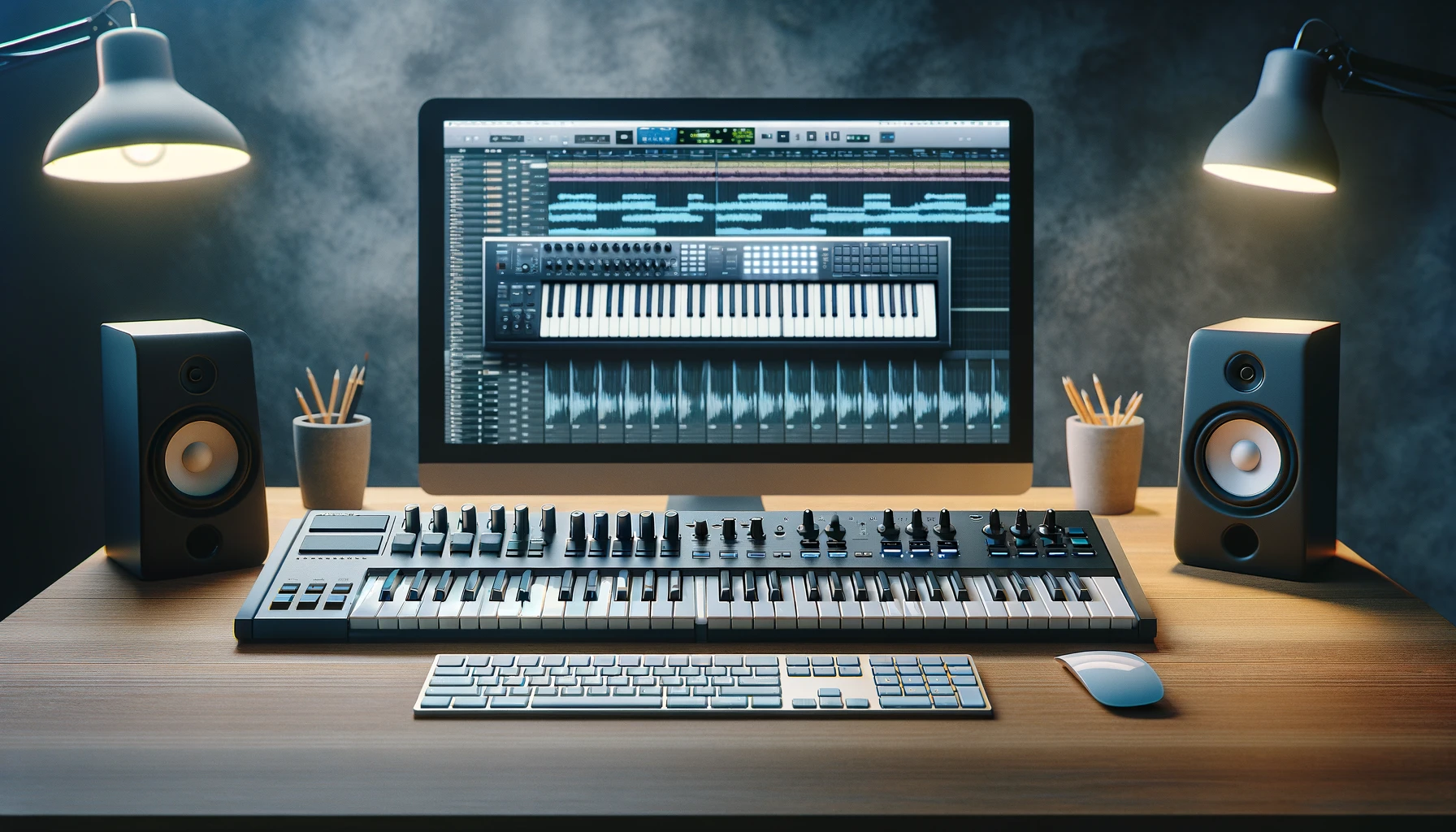Do you know the key differences between the keyboards you use to type and MIDI keyboards used to make music?
While they may look visually similar, standard keyboards and MIDI keyboards serve very distinct purposes – the former inputs text and commands to computers while the latter converts musical notes into digital data to generate sounds and sequences.
Let’s dive in to understand exactly what sets these two keyboard varieties apart.
What is the Core Difference Between Keyboards and MIDI Keyboards?
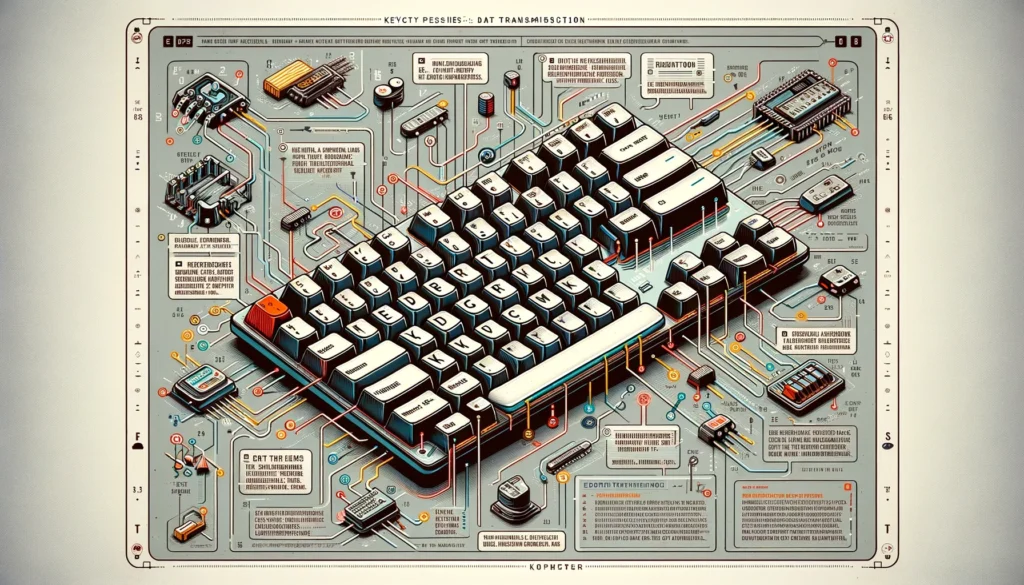
The key difference lies in the data transmitted when pressing keys on either keyboard type.
Pressing a key on a normal keyboard sends input codes that computers translate into text characters or commands.
Pressing a MIDI keyboard’s keys generates MIDI data with musical note values and characteristics to be converted into sound by separate synthesizers.
We’ll explore their distinct purposes and applications in more depth ahead.
What is a Keyboard?
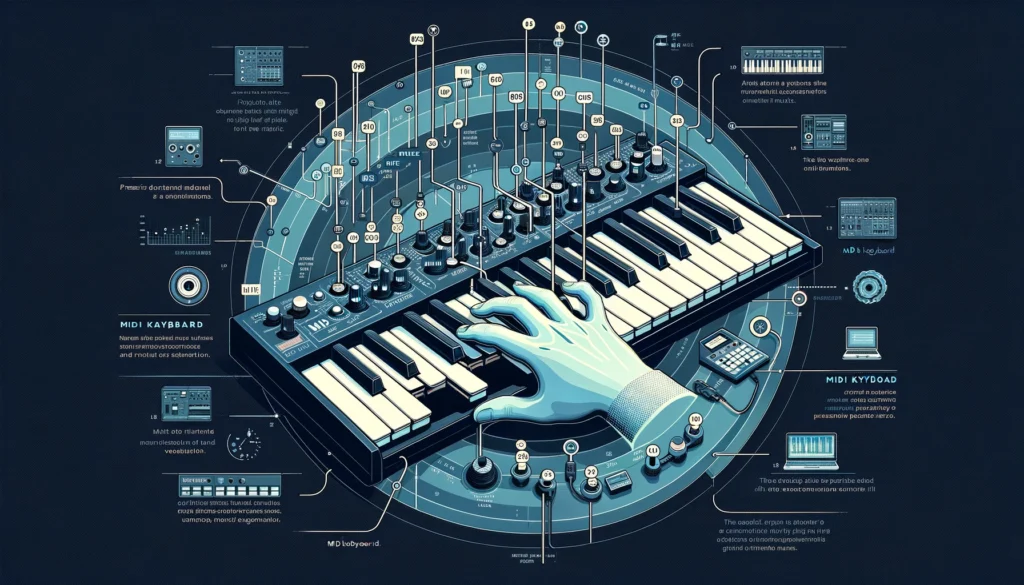
A keyboard is an input device that uses an arrangement of buttons, or keys to input data and commands into a computing device or other electronic machine.
The most common type of keyboard found in homes and offices is the computer keyboard.
Modern computer keyboards contain more than one hundred keys with a standardized layout known as QWERTY that includes the full Latin alphabet, numbers zero to nine, a dozen function keys, punctuation marks, special characters, an Enter key, arrow keys, and more.
Pressing a key on the keyboard sends an electrical signal to the device, which translates that signal into the corresponding input value like a letter, number, symbol, or command function.
For example, pressing the letter “T” key tells the computer to input the letter T.
Keyboards enable text entry and control interactions for devices like personal computers, laptops, smartphones, tablets, remote controls and more.
They are an integral input mechanism alongside the computer mouse for navigating user interfaces, writing documents, entering data, playing computer games and numerous other computing activities.
What is a MIDI Keyboard?
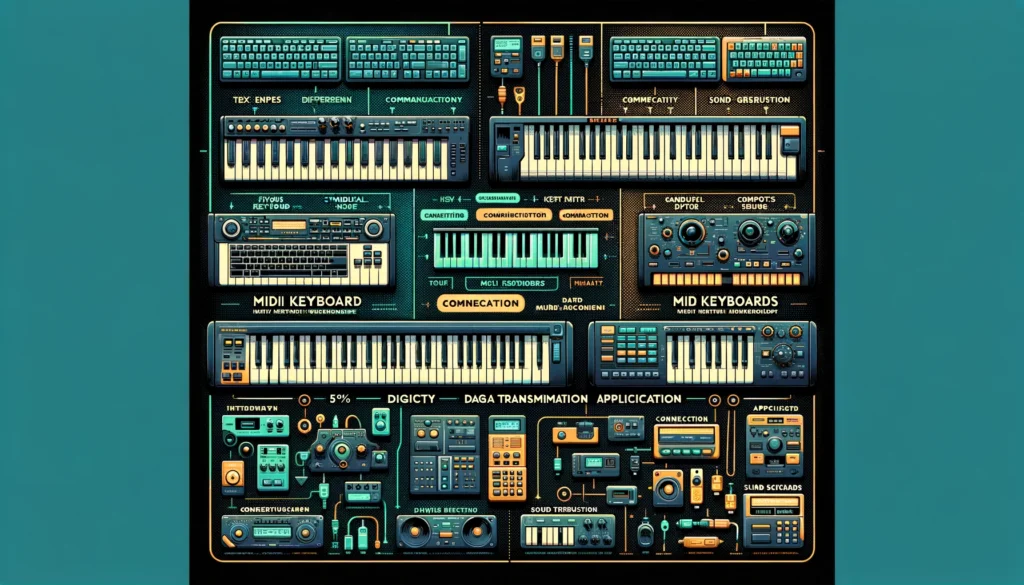
A MIDI keyboard is a digital musical device designed to generate digital note data rather than create or produce actual sounds.
MIDI stands for “Musical Instrument Digital Interface” and refers to an industry standard communications protocol that defines the digital signals and interfaces used to connect electronic musical instruments, computers, phones, and related audio hardware and software.
A MIDI keyboard contains keys much like a traditional keyboard instrument such as a piano or synthesizer.
However instead of producing sounds directly when its keys are pressed, a MIDI keyboard scans the keys and converts information like note value, pitch, duration, and pressure intensity into data messages.
These MIDI messages are then transmitted via a MIDI cable or other connection to an external tone generator, recording device, or computer system that receives the MIDI data and converts it into sounds according to its capabilities.
MIDI keyboards typically have fewer keys and a more compact layout compared to traditional 88-key piano keyboards, though larger MIDI keyboards are available.
Controls like modulation and pitch bend wheels, transpose buttons, key sensitivity adjustments and more enable musicians to add expression to performances by modifying MIDI data on the fly before it is converted into sound externally.
Key Differences
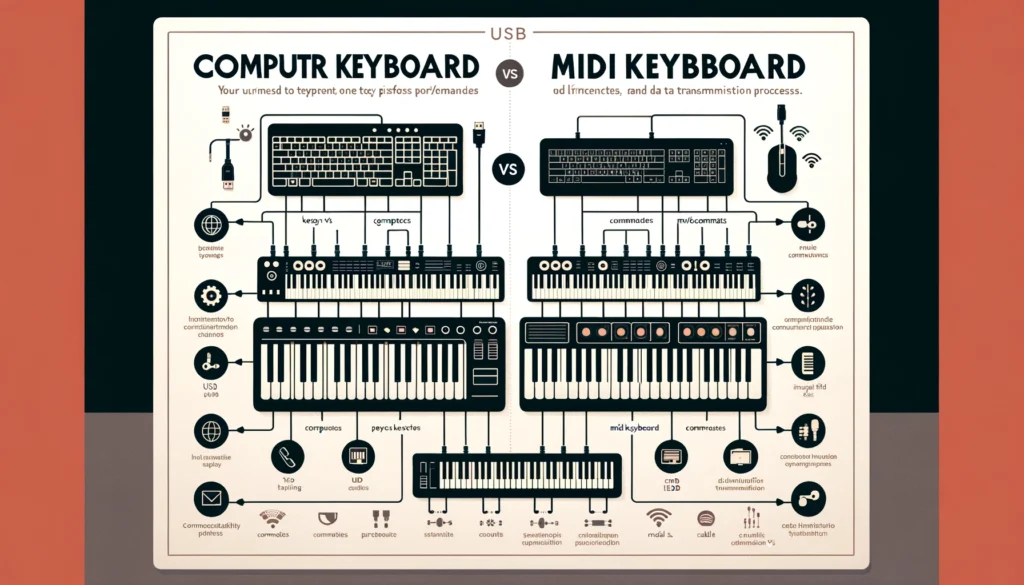
There are several fundamental differences between standard computer keyboards designed for inputting text and data, and MIDI keyboards that use the Musical Instrument Digital Interface for capturing and transmitting note information to generate sounds.
Purpose
Keyboards are primarily designed to interface with computing devices for text entry, editing files, adjusting settings, launching applications and navigating user interfaces through key presses that input specific characters and trigger command functions.
MIDI keyboards are made to create and capture digital musical note data that gets routed to sound modules, synthesizers, digital audio workstations and other music hardware/software solutions that synthesize the MIDI data into actual audio.
Keys/Controls
The standard computer keyboard supports textual input.
As such it contains the full alphabet keys, numbers, punctuation marks and functions like Enter, Shift and Spacebar for typing documents or entering information.
MIDI keyboards contain key sets optimized for playing notes and controlling musical elements.
The keyboard is usually restricted to the keys spanning at least one octave of a piano.
Controls like pitch/modulation wheels, touch sensitive keybeds, volume sliders and transpose buttons allow real-time adjustment of the MIDI note data for expressive musical creation and performance.
Connectivity
Traditional keyboards utilize standard wired USB or wireless Bluetooth connections to establish communication between the keyboard device itself and the paired computer/smartphone/tablet.
MIDI keyboards usually connect to external devices using 5-pin MIDI cables or a USB port.
The musical data is sent over this link to other compatible MIDI devices like synthesizers, audio interfaces, computers running Digital Audio Workstations and more rather than directly to the keyboarding device itself.
Data Transmission and Result
When you press a key on a normal keyboard, it transmits a scan code identifying the particular key along with its status as pressed or released.
The computer receives the scan code then converts that into the corresponding character or action associated with the key like displaying a letter or launching an application.
A MIDI keyboard also scans when keys are struck, but instead of transmitting raw key codes, the keyboard generates musical MIDI data indicating values for which note/key was hit, the attack velocity, when a note is released, intensity/pressure changes and more.
This MIDI data gets routed via cables/connections into synthesizers, computer software or other equipment able to receive MIDI signals and convert them into musical tones based on the MIDI values.
Uses/Applications
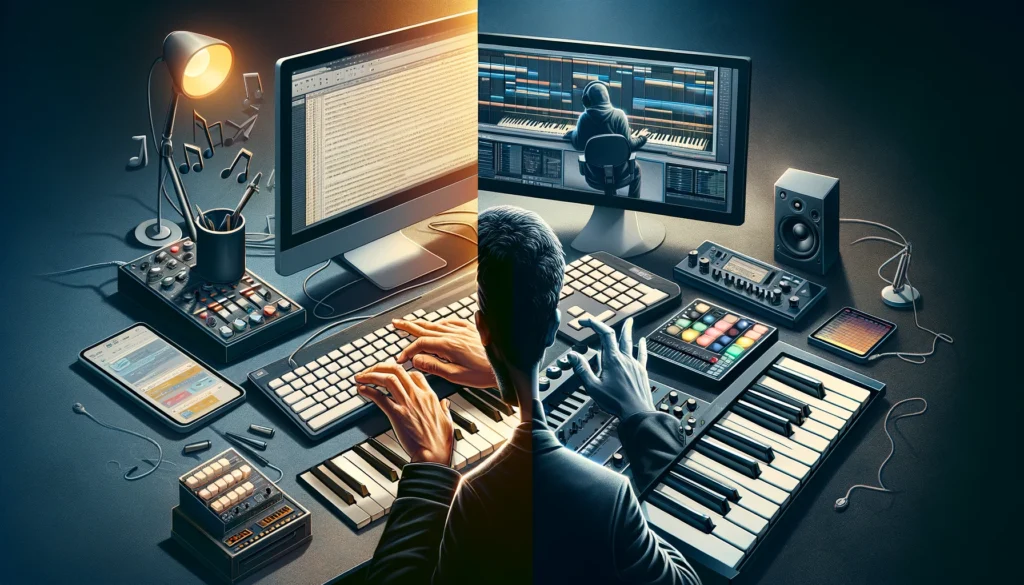
Keyboard and MIDI keyboards cater to veryv different functions and as result are applied quite distinctly for various purposes.
Uses of Keyboards
The standard computer keyboard sees extensive use for application in:
– Writing documents, emails, code and any activity involving entering text
– Navigating operating systems, file structures, software menus and user interfaces
– Inputting data into database systems, spreadsheets, forms, search fields and similar data entry scenarios
– PC gaming utilizing WASD keys for movement along with verbs/modifiers assigned to other keys
– Automation and control of processes involving special function keys to execute tasks
Essentially any application operated on a computer system utilizes a traditional keyboard for critical text/input and navigation by the user.
Uses of MIDI Keyboards
MIDI Keyboards predominantly serve musical needs including:
– Playing and recording virtual software instruments/synthesizers using Digital Audio Workstation apps on laptops and computers
– Controlling hardware synthesizers by triggering their sounds using MIDI data instead of playing keys directly on the synth device
– Live performances using MIDI keyboard to generate sounds fed into PA systems from both virtual and hardware synths
– Composition by writing/recording MIDI note sequences one track at a time without needing microphones, amps or mixers
– MIDI keyboard combined with MIDI controllers like pads and faders greatly expands the creative possibilities for electronic music
Musicians use MIDI Keyboards along with associated software and hardware to craft songs, capture expressive playing in recordings, trigger samples and loops, add electronic elements to live instrumental pieces and essentially create all varieties of digital music.
Conclusion
While the standard computer keyboard and the MIDI keyboard may appear somewhat visually similar due to their interfaces involving keys, they serve vastly different purposes.
The keyboard excels as a versatile text and command input device for laptops, PCs and mobile devices.
Whereas the MIDI keyboard specializes in capturing nuanced musical performance as editable digital MIDI data manageable in computer production software and routetable in real-time to synthesizers during live shows or in recording studios.
The increasing dominance of digital music production and growth of at-home affordable music tech gear gives MIDI keyboards great appeal with bedroom composers all the way to professional musicians alike.
